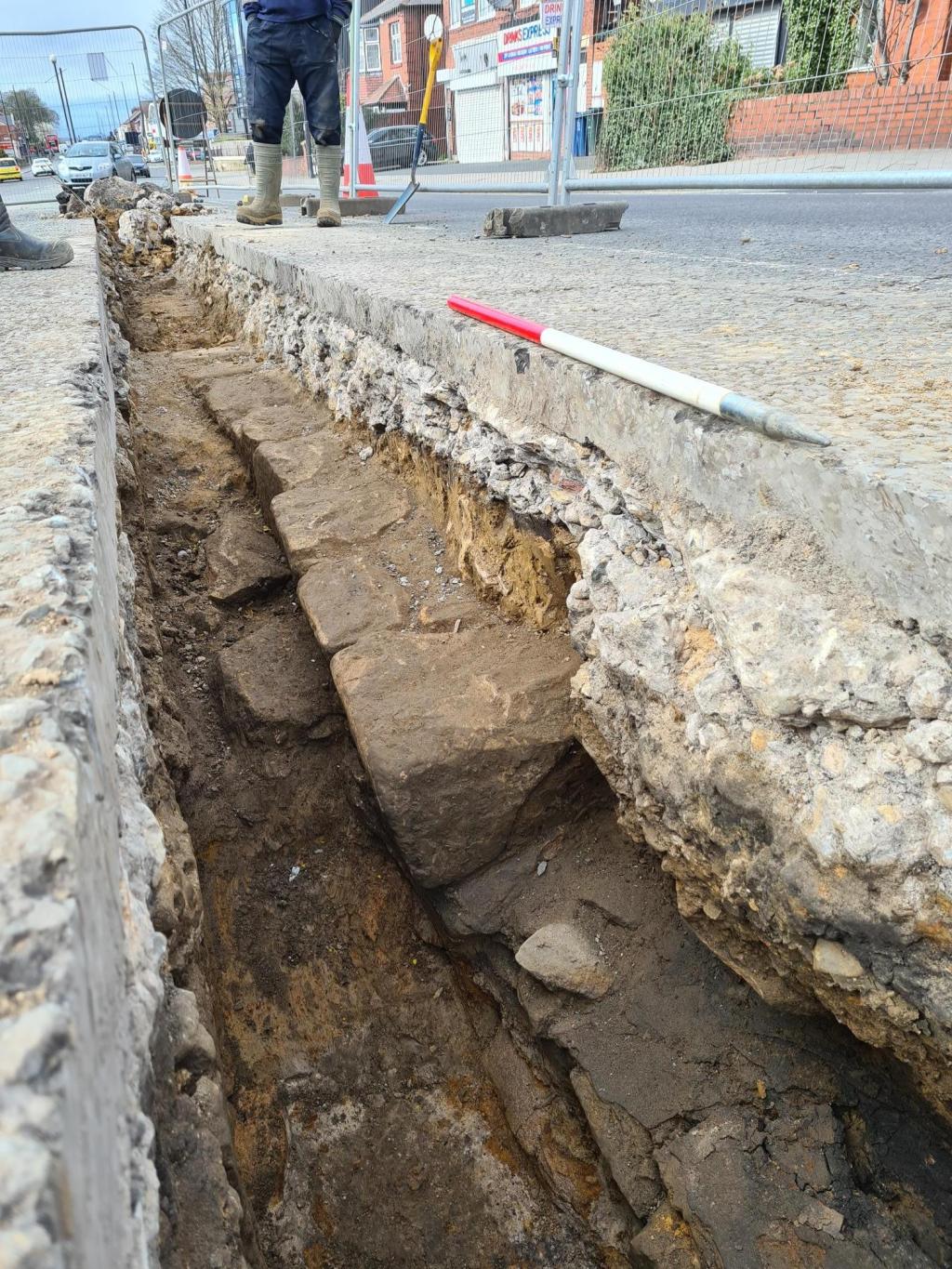 A 10-foot section of Hadrian’s Wall discovered in Newcastle, England. Courtesy Northumbrian Water Group
A 10-foot section of Hadrian’s Wall discovered in Newcastle, England. Courtesy Northumbrian Water Group
Workers from Northumbrian Water Group (NWG) uncovered a new section of Hadrian’s Wall when they were replacing a water main beneath a busy city street near the city center of Newcastle in northeast England. NWG announced the discovery in a statement on Monday.
The nearly 10-foot section of wall was revealed just below surface level. Preserved for almost 2,000 years, the section comprises a small fragment of the original wall, which ran between the island’s eastern and western coasts.
“We believe that we uncovered part of the wall’s earliest phase,” said Philippa Hunter of Archaeological Research Services Ltd., a consulting company hired to record and protect the find. The use of large stone blocks indicates that the wall segment belongs to the earliest phase of construction, as later building phases used much smaller stones.
The route of Hadrian’s Wall is fairly well documented in the area, Hunter notes, adding that it was exciting “to learn more about this internationally significant site.”
Hadrian’s Wall was commissioned in 122 C.E. under the reign of Roman Emperor Hadrian. Construction on the wall lasted six years and encompassed manned forts across its 73-mile length. Marking the northernmost border of the Roman Empire in Britain, the wall was built to protect against invasion by the Picts and other Celtic tribes living to the north. UNESCO declared Hadrian’s Wall a World Heritage Site in 1987.
Archaeological Research Services Ltd. said on Twitter that, due to the busy location of the find, the wall was exposed, cleaned, and recorded before being reburied under West Road. The firm plans to release a report with additional information.
Graeme Ridley, project manager for NWG, called the find “an incredibly special part of North East heritage,” and a “brilliant discovery.”
Source link : https://www.artnews.com/art-news/news/1900-year-old-section-hadrians-wall-uncovered-newcastle-england-1234601627












